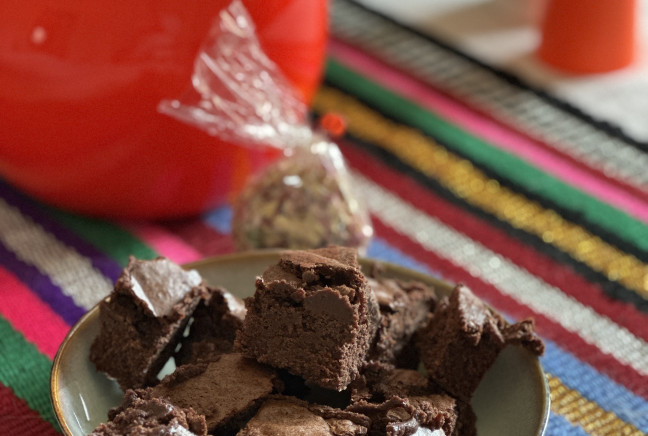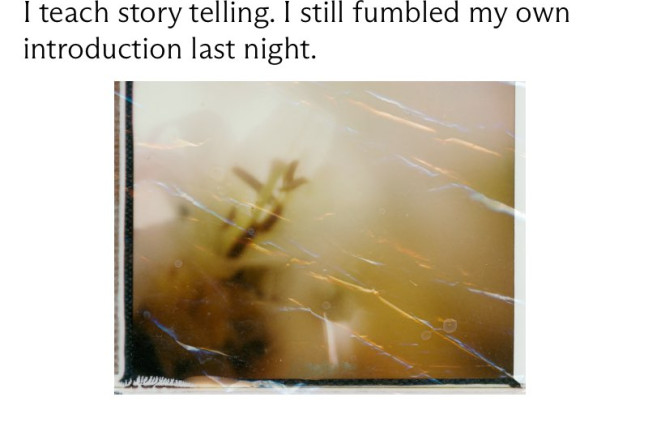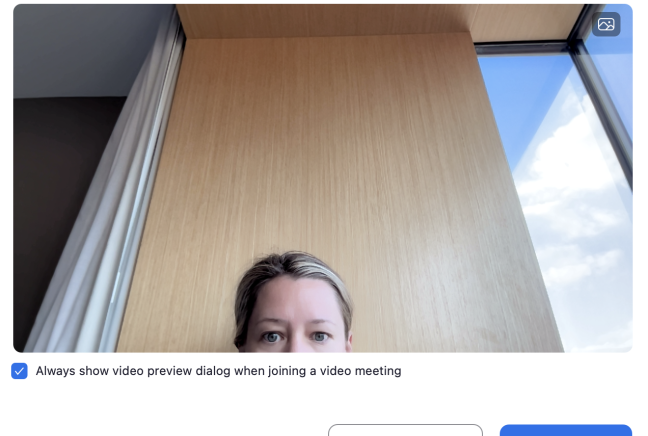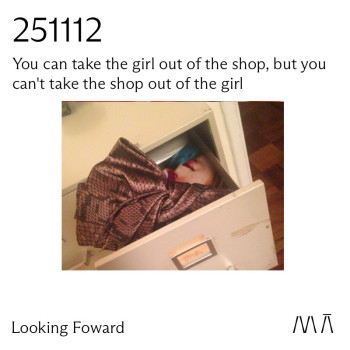
The day I embodied my inner mentor
What happens when you meet a wiser, more loving version of yourself? When I first …
I started my career in retail, then for years I ran the sample sales for Christian Louboutin in London. Now, back in Geneva, I'm channeling those years of luxury retail experience into something new: home sales that celebrate pre-loved fashion, honour craftsmanship, and build community. From champagne and macarons in Knightsbridge to apéritifs and circular shopping in my living room, some things change, others remain deliciously the same.

Last weekend, I hosted a home sale. Think of it as a second-hand store popping up in my living space. It went beautifully, and it brought up stories I'd like to share with you. Enjoy!
At the age of 21 I got my first retail job. I was hired to sell and rent DVDs and videos to an upscale crowd in an expensive and residential part of town. A year later, I got headhunted by a competitor. True story! I swear. They were specialising in supporting Geneva’s expat community, with English language books and films. Sue and Nicole, the duo at the helm of this operation (three boutiques, two in Geneva, one in Zürich), taught me everything I know about work. And retail. They were detail oriented, tough and motherly, a life-changing combo, which, strange as it may seem, readied me for a career in luxury retail and communications.
Is it any wonder I’ve set up shop in my home?
Three months after I started working for the Christian Louboutin boutique, then a franchised business, in Knightbridge, I was tasked to organise the seasonal sample sale. A real one. Samples, in fashion talk, are prototypes (maybe there is only a single one in the world) or a short, early run, of next season’s collection. These pieces are used for photoshoots, shipped or biked around London (or the world) to be worn by models, and used in still life shoots. Occasionally, pending sizing, they're worn on red carpets, or even, runway shows.
Given the life of a sample, they cannot be sold later on the shop floor. But they can be sold at a discounted price, to those who work in the industry. And so twice a year, we would curate a list (on Excel of course) of stylists, editors, photographers, fashion writers, buyers, etc, as well as a few friends of the brand, who would get to put their hands on these highly coveted pieces, slightly worn (occasionally faulty) for a discount.
I organised sample sales twice yearly up until I left London for New York in 2013. Some people loved me, others hated me, because if you weren’t on the list, you weren’t getting in. I remember one big shot editor yelling from the back of the queue that she needed to be let in because she was important. Meanwhile, a team member was ferrying a pregnant assistant indoors so she wouldn't freeze in the December cold.
The lines were long on day one, so we invested in coffee and hot chocolate carts, so our shoppers would feel taken care of while waiting for their chance at shopping discounted red soles. Oh I did offer a Sample Sale preview, generally just a half day, with a very tight guest list of around 50 people. And I served champagne and macarons. Draw your own conclusions about my refreshment choices. I was very popular back then.
In 2015, an NYC resident then, I was attending the New Yorker festival, as Christian was being interviewed on stage by the journalist who’d penned a piece for the famed magazine. During the Q&A, a woman candidly queried us about unsold shoes. What did we do with them? Is it true they were buried or burned, like she’d heard from other big brands?
A dreamy-eyed line of women formed in front of me minutes later. I took their names down, added them to the sample sale list. And all was good with the world. Fast forward to last weekend's home sale – bigger than my usual ones, with two local brands joining as a pop-up. Watching this growing community gather in my living space, trying on pieces and sharing stories, I realised it was time to put into words what I've long believed about how we should view, or value, second-hand fashion.
Those of us working directly with products tend to consume them like kids do with candy. That's how I ended up owning around 350 pairs of shoes (I never counted, but my friends remember my wall of shoes). Mind you, when I started my career, I was a penniless aspiring singer. I wore those shoes hard.
Now, years later, as I sort through what stays and what goes, I think about the hands that made each piece. The factories I visited, the craftspeople I met. This history lives in every stitch.
When I price pieces for home sales, I tend to follow this one rule: 75% off retail price is the maximum. Beyond that, we're not discounting clothes, we're discounting craft.
But clothes aren't just about craft. They're about who we are.
My flatmate Etain and I were equally skint back when I landed in Louboutin land. She'd buy tiny pretty things from Harvey Nichols while I refused to even enter, even during the sales. I didn’t see the point.
Years later, grown up though I was, I remained unconvinced about the direction my life was taking. Over drinks at Claridge's, a friend talked about 'embracing the lifestyle.' She was in events, I was in shoes, but we were peddling a glossy image of life that you’d otherwise find in the pages of Vogue. I'd been in this industry for years, still feeling like an outsider looking in. That day felt like a wake-up call. I had a choice: either I participated fully in this world I was helping to build, or I needed to find something else to do. Without trying to analyse this so much, I made my decision. I chose to embrace it. And boy, did I embrace it!
I know how privileged this closet is, just as I sell it piece by piece.
I think of how much money I’ve spent on all those pieces I own and I could certainly look back and guilt trip myself on what else could have been accomplished with the same amount. Yet I embrace this experience, strangely, with some awkwardness perhaps. I learned so much about myself, about what fashion means to those who make it. I’ve got so much respect for designers (and their teams) because I have seen first hand the sheer amount of work that goes into making a collection, selling it, and all that goes along with the creation or sustaining of a brand.
What we wear tells our story. Well, for most of us. I think of my half-brother Michel, who has been wearing the same uniform (denim and striped shirt, or polo, for the summer), for over 50 years. His wife dutifully would replace each item when it was destroyed by time and wear, and he looks forever himself. But he’s a scientist. This explains that.
But for many, myself included, what we wear and how we wear it is part of our personal self-expression. A good friend who has been very down lately just texted me a picture of a new find, a multi-coloured striped number she found while traveling, with a caption saying “je reprends des points de vie.” Her self rebalancing, reenergised, confirming this outwardly in blue/green, white and burgundy.
So many of the women present brought their own clothes, adding to my racks, telling me stories about needing to adjust with career changes, weight fluctuations, up or down, whether due health, childbirth (current pregnancy!) or peri-menopause. They shared their pleasure of finding new treasures from someone else’s wardrobe.
You cannot imagine the journey I’ve been through (hint: I'm writing a memoir) over the past 25 years: from wannabe singer, to sales assistant, to (fast forward) SVP of Global Communications for Christian Louboutin. And moving from London to New York City, to Paris, then Rome, and finally back to Geneva. Even here, life changed. There were two years of pandemic. And then adopting a dog. What once worked, no longer does. My wardrobe (and its evolution) is the story of a life. The attending crowd echoed this.
Fashion consumption is changing. Getting together and joyfully resetting our style, or adding choice pieces to our collections, whatever the reason, feels right. Not just for now. We can choose to make this a new way to shop.
Several designers and entrepreneurs joined our aperitif celebrating this circular shopping event. I am almost surprised about how fun, generous and sparkling the atmosphere was (the Ribambelles bubbles certainly helped). It almost felt like a salon.
Several groups formed around space, from the afternoon well into the evening, some sitting and chatting, others advising each other on what next to try on, what to pair with what. Women (or women-identifying people) do seem to commune around shopping.
In front of my eyes, I saw my decision to invest in ‘home-retail’ validated by the kind words and the energy of those in attendance.
Hosting a sample sale is also demanding, and I’m glad life is returning to normal for me.
Beyond the sales themselves, or let’s call it the re-homing of pre-loved fashion pieces and accessories, I’m still moved by the crowd and the conversations we had around how we consume fashion, what it means to make things nowadays, what kind of experiences we’d like more of.
And why meeting small independent local designers — like Lili K and Vesper Geneva, and Well Rounded, matters to us as a multifaceted, diverse community.
On Sunday, a quiet day, friends came (or returned) to enjoy the dressing up opportunity, à la Carrie Bradshaw. I let myself become the stylist, with my friend’s tween daughter as styling assistant, and voilà. Suddenly, in front of me, a swath of opportunities.
The Closet Sale and Pop Up will return in the New Year, maybe with a new name. Until then, I invite you to consider circular shopping, whether you start your own event, join someone else's, or simply start purchasing from one of the many online platforms supporting this new and worthwhile way to dress ourselves anew.

What happens when you meet a wiser, more loving version of yourself? When I first …

Last night I fumbled my own introduction—despite literally teaching storytelling. The …

The philosophy behind Le Trente emerged from a simple revelation: we learn best from each …
